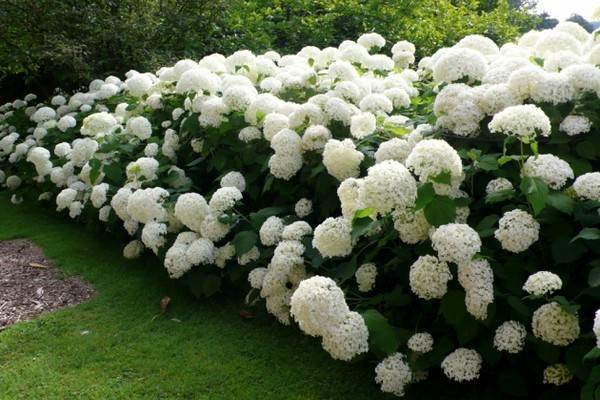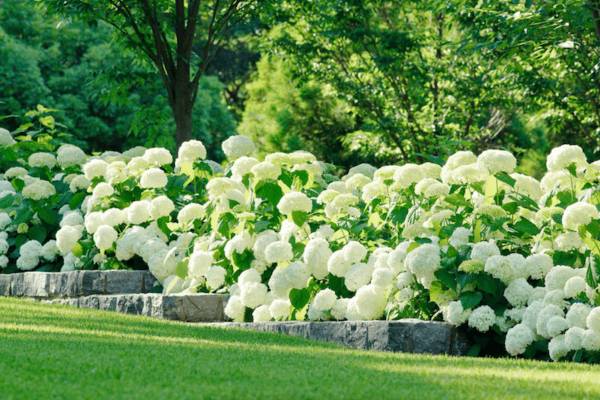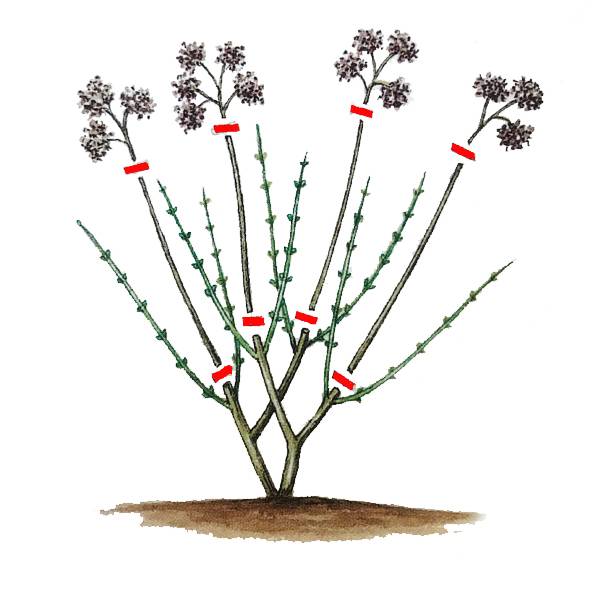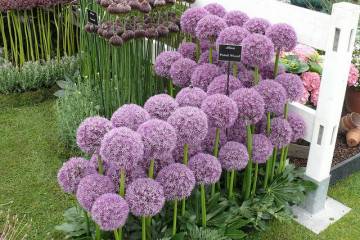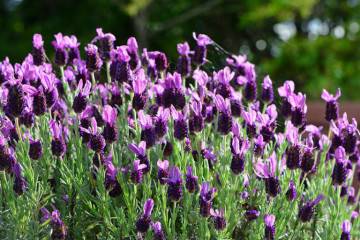Hydrangea Annabelle - planting and caring for a plant in the open field
Content:
Hydrangea Annabelle (in Latin Arborescen Hydrangea) refers to perennial plants, indispensable in the creation of landscape design. The flower is resistant to cold and bad weather conditions, has a strong immunity to many diseases.
A brief description of Annabelle hydrangea
The shrub is grown for decorative purposes, is large and grows easily in width. Annabelle tree hydrangea grows up to 1.5 m in height, the leaves have a green or emerald shade without gloss. The average leaf length is up to 20 cm, the culture begins to bloom in June, flowering ends in September-October.
Varieties
Hydrangea Annabelle is available in two varieties.
Pink - bushes with pink flowers. The plant prefers alkaline soils and areas with good lighting. Blooms in late June, likes sufficient soil moisture.
Strong (Strong) has large white inflorescences, covering the green mass of the shrub. To maintain the splendor of the buds, regular pruning is required.
Which place to choose
In the description of the hydrangea tree-like Annabelle, it is indicated that the shrub does not tolerate constant waterlogging of the soil, cold and damp air. The plant needs a dry and well-ventilated place, but without constant exposure to strong and gusty winds.
The best option would be a site where the bush will be protected by a fence, house or annex. The soil should have a stable level of moisture with average values. Stagnant water near the root system can cause it to rot, so planting hydrangeas in areas where moisture constantly collects should be avoided.
Open ground planting process
The Annabelle hydrangea has its own soil requirements. The plant prefers slightly acidic soil types; with an increased alkali content, it is not able to develop normally and may die.
For alkaline soils, a mixture consisting of peat, sand, turf and sawdust taken in equal proportions is added to the planting pits. A plant planted with such nuances will need to be fed periodically.
The place on the personal plot should be away from trees and large crops. Otherwise, the hydrangea will run out of water.
Planting works in the Moscow region are carried out in the spring, from late April to early May, the exact time depends on weather conditions. Adult shrubs 2-3 years old are suitable for planting.When growing crops in cold areas (in Siberia and the Urals), the planting time is postponed to the first weeks of summer.
Planting works are carried out according to the following algorithm:
- Before planting, the root system is disinfected. Plant roots are immersed in potassium permanganate solution for 5-10 minutes.
- Pits 40 × 40 cm in size are dug on the site, more than 50 cm in depth. This ratio will allow the roots to develop normally, not to feel constrained.
- When planting on depleted soils, a special soil is used, which is sold in flower shops. Self-prepared soil mixture does not guarantee the absence of parasite larvae and fungal infections in it.
- Places located in the lowland are additionally drained with a mixture of crushed stone and sand.
- After the completion of the preparatory measures, the roots of the bush are carefully straightened along the bottom of the pit, the voids are covered with soil. The upper section of the root system remains above the ground, the soil around the shrub must be lightly tamped.
- The plant is watered with 1-2 buckets of water, the trunk circle is filled with a mulch mixture. This will create the microclimate necessary for the normal development of the roots, and will not allow moisture to evaporate too quickly.
Shrub propagation
In addition to planting and care in the open field, many are interested in the reproduction of the Anabel hydrangea. There are several common methods: cuttings, layering and dividing the bushes.
Cuttings
Harvesting of material is carried out with the onset of spring - in April days with preventive pruning of shrubs. For reproduction, twigs are taken from the top of the plant and young shoots. The average length of the cutting is 15 cm; it should not show signs of fungal and viral diseases and traces of pests.
After cutting, they are planted in containers with a pre-moistened soil consisting of peat, sand and humus (taken in equal proportions). During planting, a distance of 25 cm is observed, after which the container is covered with plastic wrap, which helps to create a suitable microclimate.
The development of cuttings occurs within 1.5-2 years. During the entire period, sufficient soil moisture is maintained in containers, the film is removed after final rooting. Bushes can develop both outdoors and indoors, but during the cold season they must be brought into the house.
Layers
In early September, small holes are dug around an adult bush, up to 10 cm, the healthiest and most developed lower shoots are chosen. Small cuts are made on them, placed in a pre-dug hole. The branches are fixed with hairpins, sprinkled with nutritious soil, watered and covered with a layer of mulch.
Plant care should be started in spring. The above procedures will help the shrub to easily survive the winter bad weather.
Dividing the bush
It is used only when transplanting shrubs to a new place. The technique is used in exceptional cases, since reproduction leads to damage to the root system of the mother plant, and the outcome of the procedure cannot be predicted.
Care rules
Proper care of hydrangea will allow it to delight its owners for several decades. Activities are not difficult even for beginners, basically it all comes down to timely watering and pruning.
Pruning
Paniculata hydrangea Anabel is pruned twice a year: in the spring and autumn months.
Pruning must be carried out:
- for prophylaxis with excision of a dry, sick, broken stem;
- for decorative needs with the formation of the crown and giving the shrub a certain appearance.
In the first case, pruning of branches is carried out in the spring, except for damaged shoots, parts that interfere with normal air circulation inside the bush are removed. The longest shoots are shortened to create a neat look. This method stimulates the growth of lateral branches, helps the shrub to acquire density.
Top dressing
In the description of the Pink Annabel hydrangea, it is indicated that the shrub grows and develops better with the introduction of mineral-organic fertilizers. The plant does not tolerate feeding with ash or lime mortar. Among mineral dressings, it is better to give preference to:
- potassium nitrate;
- superphosphates;
- urea.
The first treatment is carried out before the growing season. At this time, phosphorus-potassium varieties are introduced, designed to enhance the growth of bushes. Secondary feeding implies the same type of fertilizer that is applied at the beginning of the formation of inflorescences.
Watering
Immediately after planting, the soil under the bushes is moistened every 48 hours. At least one bucket of cool water is poured under each bush. In order to avoid drying out of the soil, the near-stem circle can be mulched, the layer should not be more than 8 cm. Mulch will save moisture, avoid the growth of weeds around the hydrangea.
Possible diseases and problems
An unpretentious plant is not protected from insect attacks and the development of diseases. Most bush problems are associated with:
- annular spotting. This is a viral disease that affects not only garden flowers, but also raspberry bushes, gooseberries, and vineyards. The infection can be determined by dark dry spots on the foliage, which over time cover a large area and lead to its death. The reasons for the appearance of ring spot include contaminated land, poorly processed tools, and the transfer of the virus by insects. The disease is not treatable. The shrub is uprooted and burned;
- powdery mildew, a common fungal infection. It affects most horticultural crops. You can determine the pathological process by the white dots that appear on the leaf plates. From the outside, they look like a plaque of cobwebs. The infection causes the leaves to curl and dry out. Fungus treatment consists in treating the bushes with fungicides, removing damaged areas. To avoid the transfer of infection to nearby crops, they are also sprayed with medicinal solutions;
- gray rot. This is a fungal infection that affects not only the green part of the plant, but also the cuttings that are responsible for the reproduction of shrubs. The fungus is identified by a grayish bloom on the leaf plates. Treatment consists in removing shoots and spraying hydrangeas and nearby crops with fungicides;
- chlorosis. According to clinical signs, the disease resembles burns on foliage from the sun. The leaves begin to discolor and turn yellow. The source of the problem is iron deficiency. To restore the bushes, fertilizing with this element in the composition is necessary.
In addition to certain diseases, pests can attack the hydrangea:
- leaf aphids are a classic parasite of all household plots. Insects are localized on the green parts of plants and feed on their sap. Over time, the shrubs cease resistance, begin to dry out and turn black. If pests hit one of the parts of the bush, then ladybugs will help to cope with them. In other cases, chemical treatment will have to be carried out;
- spider mite. You can identify the parasite by the thin web, with which it braids the leaves and stems. Due to the invasion of small insects, the shrub does not have enough sunlight and nutrients, the hydrangea stops flowering. Treatment begins with mechanical removal of the parasite and spraying the bushes with insecticidal substances;
- snails and slugs are moderately dangerous pests. With the timely removal of parasites, shrubs can recover, if they ignore the treatment with special compounds, they can cause serious damage.
Experienced gardeners recommend regularly examining the plants in the backyard for the timely detection of fungal infections and insect pests. Preventive treatment, attracting birds to the garden (placing feeders and birdhouses around it) will prevent the problem, get rid of the need to treat the affected flowers.
Hydrangeas are long-lived, unpretentious plants that can decorate household plots with their flowers for several decades. Proper care of the shrub, timely pruning, watering and enriching the soil with fertilizers will help you get beautiful and healthy shrubs that can withstand many diseases and pests.
